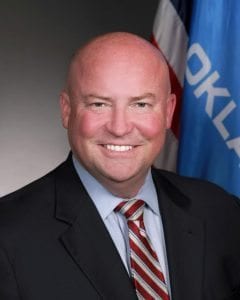BY JOE DORMAN
 At the Oklahoma Institute for Child Advocacy, we believe in two overarching principles when it comes to funding state agencies and services: first, agencies need adequate funding to support their central missions; second, agencies should be accountable and transparent to the public about how they spend money and why.
At the Oklahoma Institute for Child Advocacy, we believe in two overarching principles when it comes to funding state agencies and services: first, agencies need adequate funding to support their central missions; second, agencies should be accountable and transparent to the public about how they spend money and why.
Because we believe in accountability and transparency, OICA supports initiatives for improving state agency audits. That is not the same thing as believing that state agencies are wasteful or are receiving too many dollars. In fact, most of the time, audits of state government are likely to show the opposite: that agencies are underfunded, understaffed and are not getting the resources they need to serve their constituents [and, importantly to OICA, vulnerable children]. During my time in the state Legislature, I supported agency audits for exactly that reason.
Back in 2003, the current state Auditor and Inspector, Gary Jones, and I were at a candidate forum in Lawton where he discussed the need for more performance audits on state agencies. I took his call to heart and worked to pass legislation better defining how agencies would undertake audits and streamline the process.
While the state Legislature never provided the funding needed for a comprehensive audit of most agencies, it did pursue a few performance audits of larger agencies. The results were predictable: they demonstrated that agencies could achieve some efficiencies through modernization, but they also showed the agencies were severely underfunded and barely able to perform their core missions.
One prominent example is criminal justice. A Department of Corrections audit was performed in 2007 and again in 2014. Both audits demonstrated the department was understaffed and our prisons were overflowing after years of lawmakers rejecting, repealing or reducing efforts to promote alternative sentencing programs that decreased the prison population.
The most recent audit cited the Justice Reinvestment Initiative [JRI], enacted in 2012, as one notable reform effort [one which I was proud to support during my days as a legislator]. That program called for increased use of electronic monitoring of offenders outside prison and mandatory supervision upon release from prison. The JRI plan would have eventually diverted up to 2,100 offenders away from state prisons thanks to prevention and alternative sentencing passed by lawmakers under the efforts of Kris Steele, the Speaker of the House at the time.
Officials estimated those reforms would require $110 million in expenditures between budget years 2013 and 2021 but ultimately save $249 million that would otherwise be spent on state prisons. Yet in 2013, less than $4 million was earmarked for those efforts and no specific JRI appropriations were provided in 2014. In addition, appropriations from the Legislature continued to be far less than what was needed. The audit represented a call to action for many lawmakers: either adequately fund the Department of Corrections or send the agency into a free-fall.
Today, we may be seeing history repeat itself, this time at the Department of Health. While it received just a 3% cut from the previous year’s budget, total cuts have totaled approximately 30% in recent years. If you can imagine making just 70 cents on the dollar as you were a few years ago, you will understand how many sacrifices these cuts have required within this essential government agency.
OICA support audits, but legislators hoping to “trim the fat” from government should think twice about using audits to support that approach to governance. What they are likely to find isn’t bloated bureaucracy in need of a diet, but rather agencies that have been starved for many years at the expense of children, seniors and other groups who rely on state services. We welcome that level of scrutiny as the first step towards adequately funding state government.
– Joe Dorman is chief executive officer of the Oklahoma Institute for Child Advocacy and a former six-term state representative.







